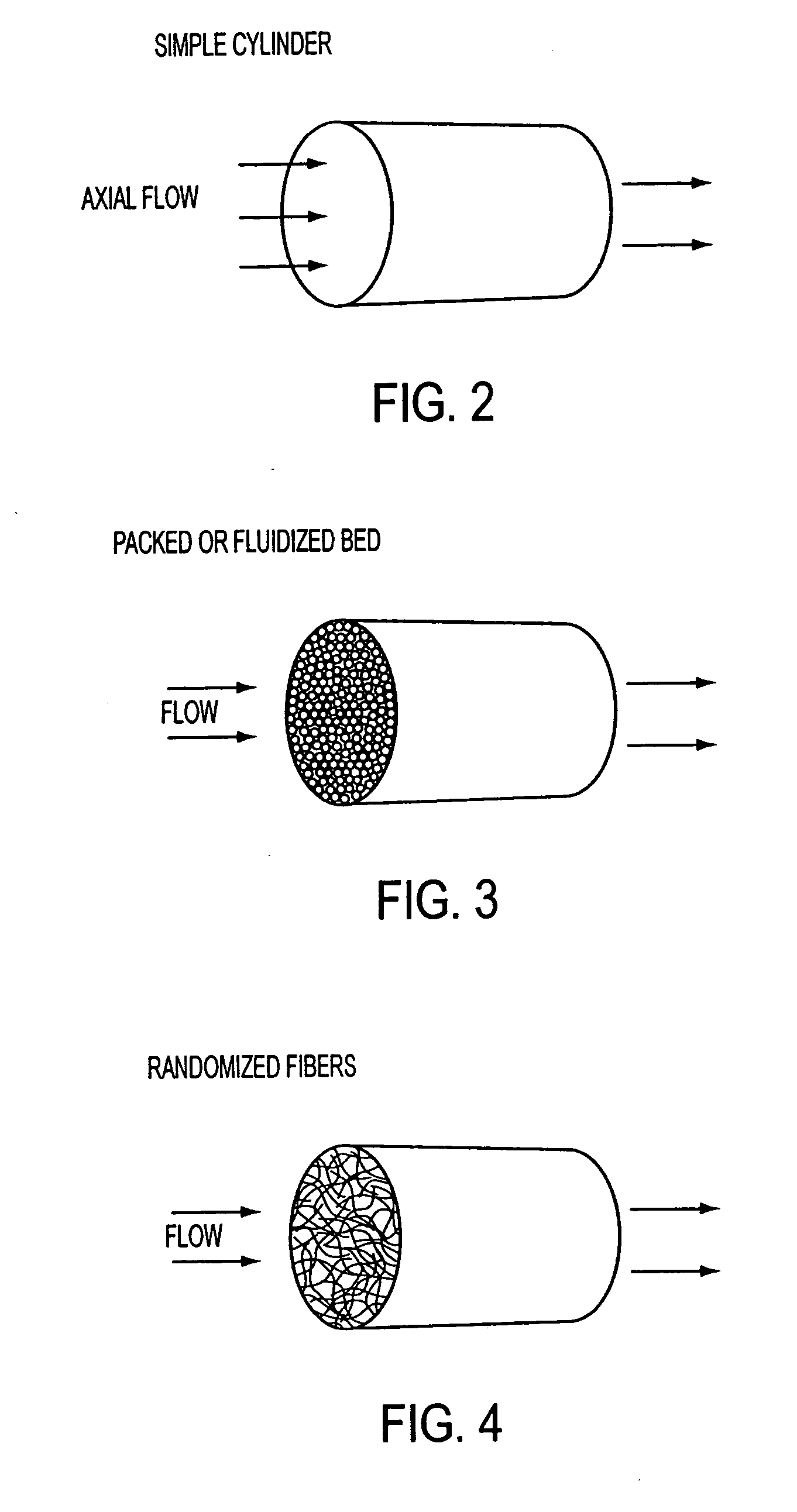Device capable of removing contaminants from a fluid
- Summary
- Abstract
- Description
- Claims
- Application Information
AI Technical Summary
Benefits of technology
Problems solved by technology
Method used
Image
Examples
example 1
Preparation of Photosensitized Titanium Dioxide
[0110] This example describes the preparation of photosensitized titanium dioxide using various ruthenium-based photosensitizers. The procedure utilized here generally follows the procedure set forth in U.S. Pat. No. 6,245,988 B1 to Grätzel, et al., referred to previously and incorporated herein by reference in its entirety (see, for e.g., column 13, line 40 to column 14, line 47), with a few variations as described below.
A. Photosensitizer is cis-bis(isocyanato) (2,2′bipyridyl-4,4′dicarboxylato)ruthenium (II)
[0111] Aggregated particles of titanium dioxide available commercially (e.g., Nanotek TL-1501-000-025, supplied by Nanophase, Burr Ridge, Ill.) were broken down into separate particles, as described in the Grätzel, et al., patent. Thereafter, surface moisture on titanium dioxide was removed. One gram of titanium dioxide was heated to 500 degrees Centigrade for 30 minutes. The resulting dry powder was allowed to cool under argon....
example 2
Odor Removal Experiment
[0115] A. Control (Ultraviolet Light Plus Titanium Dioxide)
[0116] Gas mixtures of a tracer molecule (i.e., isopropyl alcohol) in purified air were generated using a Kin-Tek 485 precision gas standards generator. The generator was set to deliver 8 parts per million of the molecule in purified air. The gaseous mixture was passed into a chamber (R J Harvey, Hillsdale, N.J.) and through a 9 cm number 42 Whatman filter paper containing titanium dioxide (1 gram, Nanotek TL-1501-000-025, supplied by Nanophase, Burr Ridge, Ill.). The chamber was cylindrical, with a 3.5 inch diameter and 2 inch length (i.e., a volume of about 19 sq. inches) and a flow rate through the chamber of 32,000 nL, min. The gas stream exiting the chamber was analyzed by gas chromatography.
[0117] The photocatalytic reaction was driven by a 500 W Xenon arc lamp. The infrared component (heat) was removed from the light beam using a water filter (ThermoOriel, part# 61945) and the wavelength rang...
example 3
Light Intensity Requirements for our Fluid Purifying Device
[0126] This example provides experimental results showing that a fluid purifying device using visible light to excite photosensitized titanium dioxide requires approximately two orders of magnitude greater light intensity compared to that required by one using ultraviolet light and titanium dioxide.
[0127] In this example, three experiments were performed. The three experiments used materials described previously in Examples 1 and 2. The model contaminant molecule sought to be removed in this experiment was isopropyl alcohol. Two of the experiments utilized visible light and titanium dioxide coated with photosensitizer (Ru-535; see experimental procedure for preparation of this photoreactive surface in Example 1). The other experiment utilized ultraviolet light and bare titanium dioxide. The two visible light experiments were conducted at two total light intensities, namely between about 1-2 mW / cm2 and at about 94 mW / cm2. T...
PUM
| Property | Measurement | Unit |
|---|---|---|
| Power | aaaaa | aaaaa |
| Flow rate | aaaaa | aaaaa |
| Light intensity | aaaaa | aaaaa |
Abstract
Description
Claims
Application Information
 Login to View More
Login to View More - R&D
- Intellectual Property
- Life Sciences
- Materials
- Tech Scout
- Unparalleled Data Quality
- Higher Quality Content
- 60% Fewer Hallucinations
Browse by: Latest US Patents, China's latest patents, Technical Efficacy Thesaurus, Application Domain, Technology Topic, Popular Technical Reports.
© 2025 PatSnap. All rights reserved.Legal|Privacy policy|Modern Slavery Act Transparency Statement|Sitemap|About US| Contact US: help@patsnap.com



